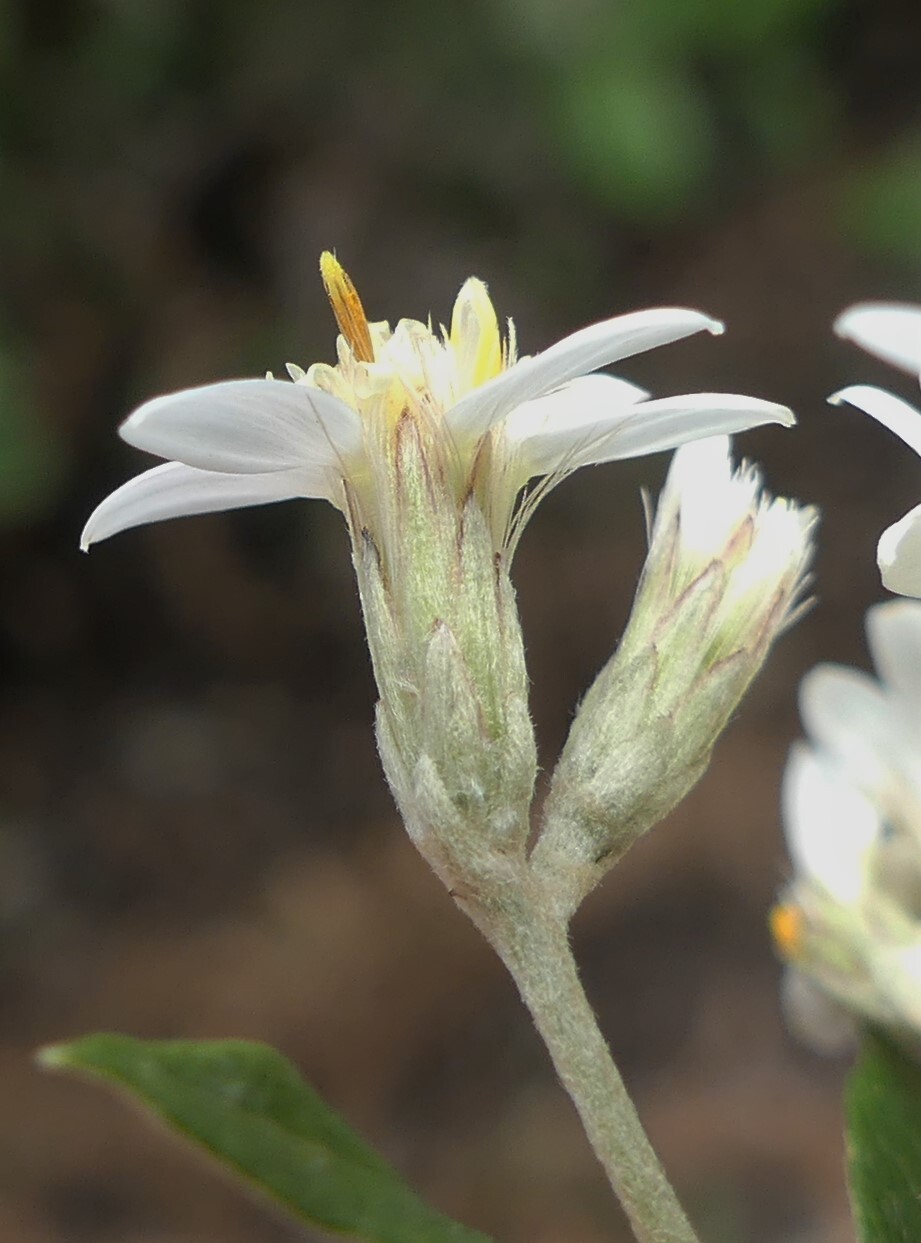Olearia argophylla
(Labill.) Benth. Musk Daisy-bushShrub or tree to c. 10 m high; branchlets covered by dense, fine, appressed silvery hairs. Leaves alternate, ovate to broadly elliptic, (15–)30–120(–180) mm long; (10–)20–70(–90) mm wide; upper surface glabrous, dark green, reticulate-veined, lower surface white or silvery, minutely tomentose; margin dentate (rarely entire); petiole to c. 25 mm long. Capitula 12–27 mm diam., often profuse, in corymbs; peduncles to c. 20 mm long; involucre conical, 5–7 mm long; bracts 4–6-seriate, graduating, sericeous. Ray florets 3–8, white, ligules 4–10 mm long; disc florets 3–8, yellow. Cypsela narrowly cylindric, 6–8-ribbed, 2.5–4 mm long, sparsely sericeous between ribs; pappus bristles white, straw-coloured or pinkish, c. 5 mm long. Flowers mainly Sep.–Feb.
VVP, VRiv, GipP, OtP, WaP, Gold, CVU, GGr, NIS, EGL, EGU, WPro, HSF, HNF, OtR, Strz, MonT, HFE, VAlp. Also NSW, Tas. Widespread in gullies and wetter forests through much of the State, but surprisingly absent from the Grampians. Rare on the Volcanic Plain (e.g. at Tower Hill near Koroit).
Freely hybridizes with O. erubescens (typically a species of drier forests) wherever the 2 species occur in proximity, producing progeny of intermediate stature, leaf and inflorescence size etc. These intermediates superficially resemble O. speciosa but that species is readily distinguished by the woolly (rather than close-appressed) indumentum on the lower surfaces of the leaves, and the significantly larger capitula.
Walsh, N.G.; Lander, N.S. (1999). Olearia. In: Walsh, N.G.; Entwisle, T.J., Flora of Victoria Vol. 4, Cornaceae to Asteraceae, pp. 886–912. Inkata Press, Melbourne.
 Spinning
Spinning

